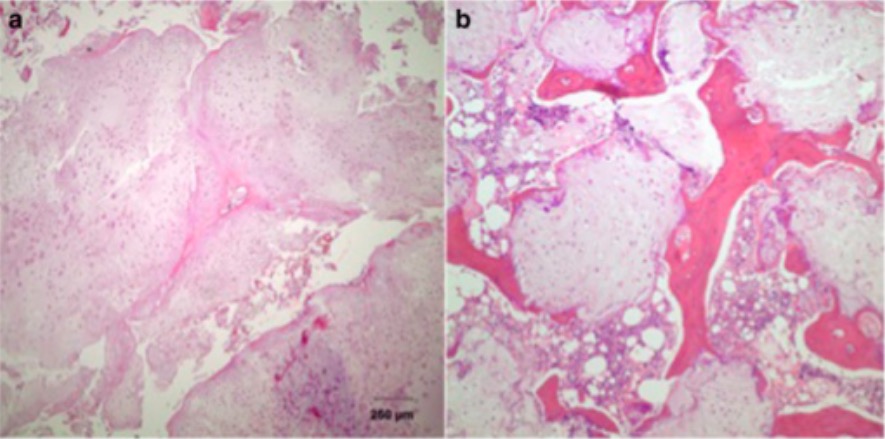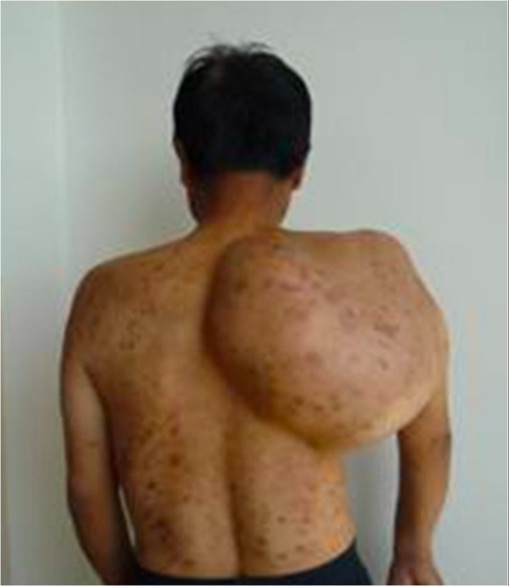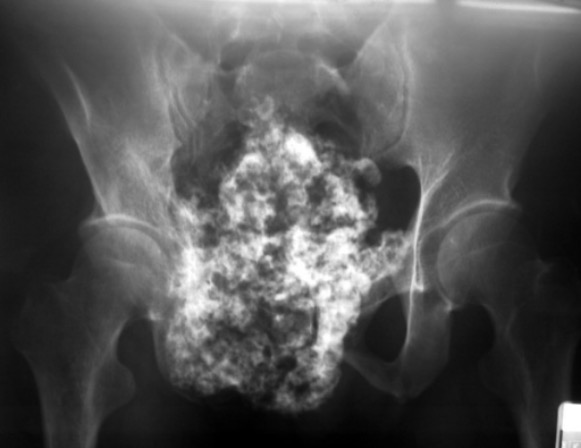Chondrosarcoma is a malignant bone Bone Bone is a compact type of hardened connective tissue composed of bone cells, membranes, an extracellular mineralized matrix, and central bone marrow. The 2 primary types of bone are compact and spongy. Bones: Structure and Types tumor Tumor Inflammation characterized by the production of a cartilaginous matrix. This bone Bone Bone is a compact type of hardened connective tissue composed of bone cells, membranes, an extracellular mineralized matrix, and central bone marrow. The 2 primary types of bone are compact and spongy. Bones: Structure and Types tumor Tumor Inflammation most commonly affects adults over the age of 50. Chondrosarcoma usually presents with a slowly increasing mass Mass Three-dimensional lesion that occupies a space within the breast Imaging of the Breast (or swelling Swelling Inflammation) with a dull achy pain Pain An unpleasant sensation induced by noxious stimuli which are detected by nerve endings of nociceptive neurons. Pain: Types and Pathways. Depending on the tumor Tumor Inflammation’s location, this malignancy Malignancy Hemothorax may also be associated with symptoms of nerve compression Nerve Compression Brachial Plexus Injuries. The diagnosis is established based on imaging characteristics and tissue biopsy Biopsy Removal and pathologic examination of specimens from the living body. Ewing Sarcoma. The mainstay of treatment is surgical excision. Prognosis Prognosis A prediction of the probable outcome of a disease based on a individual's condition and the usual course of the disease as seen in similar situations. Non-Hodgkin Lymphomas depends on the aggressiveness of the tumor Tumor Inflammation, which is determined by the histological grading Grading Methods which attempt to express in replicable terms the level of cell differentiation in neoplasms as increasing anaplasia correlates with the aggressiveness of the neoplasm. Grading, Staging, and Metastasis system.
Last updated: Dec 15, 2025
Chondrosarcoma is a malignant bone Bone Bone is a compact type of hardened connective tissue composed of bone cells, membranes, an extracellular mineralized matrix, and central bone marrow. The 2 primary types of bone are compact and spongy. Bones: Structure and Types tumor Tumor Inflammation characterized by the production of a cartilaginous matrix.

Microscopic findings in low-grade chondrosarcoma (H&E):
a: Hypocellular chondroid lobules on low-power magnification
b: Host bone permeation is a hallmark of chondrosarcoma.

Chondrosarcoma of the scapula:
Tumor measures 38 x 33 x 30 cm (14.96 x 12.99 x 11.81 in).

Chondrosarcoma:
Anteroposterior view shows tumor at the right pubis and periacetabulum that extends to the left pubic area.